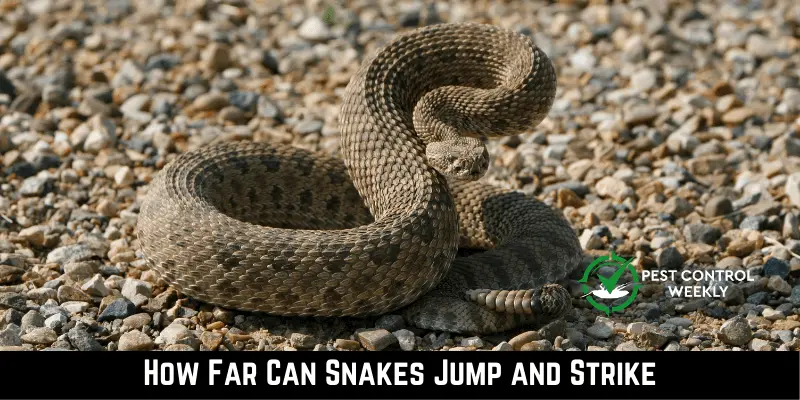Imagine you see a snake, and it accidentally begins to jump on you. Yikes! Nothing would be more terrible than this. Snakes are deadly critters and can climb or jump things or even humans. However, you may be curious about; how far can snakes jump and strike.
Snakes can jump ½ or ⅓ of their body length, but this distance varies according to their species. However, rattlesnakes and cobras are the only snakes that jump farthest. Therefore, knowing about the snake jumping ability to prevent yourself from danger is essential.
Do you want to learn more about how a snake can jump or strike? Read the article through to the conclusion.
Does a Snake Jump?
Yes, snakes jump, but they don’t jump in a conventional sense, rather, they attack while still lying on the ground. However, it may appear that they are striking in the air, but they don’t. Although all species of snakes don’t jump, some snakes jump from one tree to another.
The jumping ability of snakes depends upon the length of their bodies. The more the size of their body, the higher the snakes jump. Moreover, the snakes jump higher when they coil at the start because it gives a strong base for snakes to push their body while striking.
Difference Between Strikes and Jumps
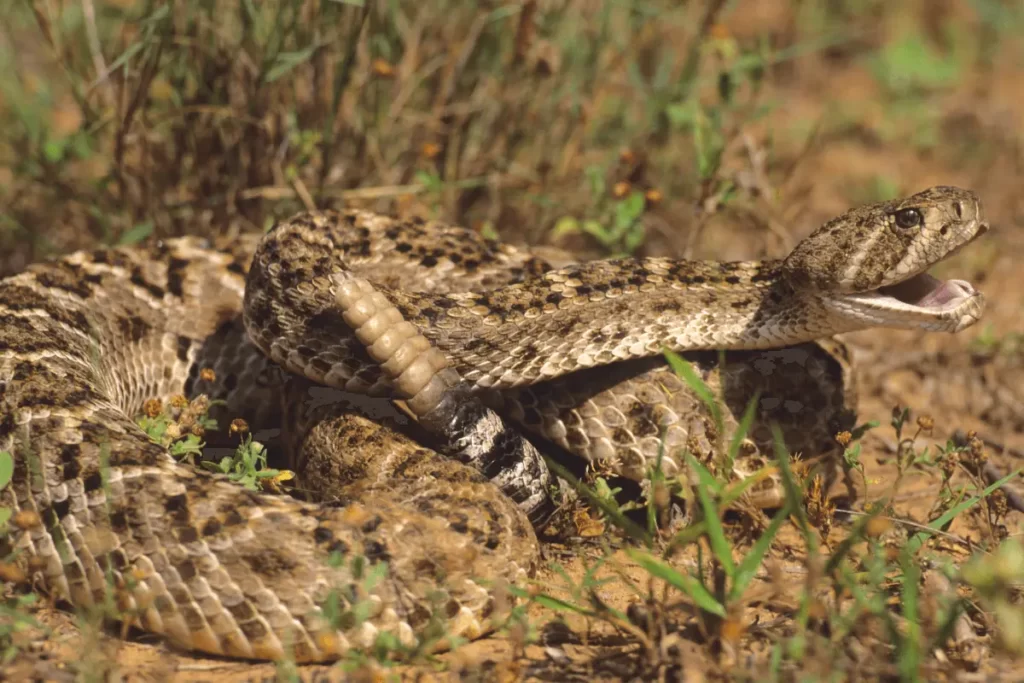
Striking is a rapid flicking of the head that snakes make as a protective or aggressive response to a threat, while during a jump, they completely leave the ground to attack their prey.
If a snake feels threatened, it strikes its predators to bite them. Furthermore, a snake can go off the ground totally during jumping, while ⅓ of its body remains above the ground during striking. Moreover, strikes are more powerful and quick than jumps. Therefore, a striking snake can be more harmful than a jumping snake.
Why Does a Snake Jump and Strike?
According to the Journal Biology Letters, snakes can strike or jump because of two reasons, to acquire nutrients or to prevent themselves from predators. Both venomous and non-venomous snakes can jump due to the following reasons:
To Defend Themselves
Snakes usually strike to defend themselves from their predators. You’ll be safe if you don’t tease a snake you see. It most certainly desires your absence more than you desire to leave. However, if you mess up with a snake, it will jump or strike you to defend itself. Furthermore, they jump on other animals to protect themselves from danger.
When a snake in the wild strikes at you, the best course of action is to get away from it and consider how far it may be able to strike—especially if the snake is coiling up.
To Attack or Eat Prey
Snakes can jump on their prey to disable them to fulfill their nutritional requirements. Non-poisonous snakes kill their prey by attacking them rather than their sting. Some snakes can kill their victims with just the sting of their venom, but others require aid to render their prey inoperable.
Because many of the creatures that snake prey on are swift and aware of their surroundings, a snake attacks its victim using elements of speed and surprise. In this way, the snake captures its prey fastly before giving them a chance to flee.
The Ability of Snakes to Jump
As already mentioned, the ability of snakes to jump or strike depends on their size and type, the more the size of their body, the farther they jump. Additionally, the snakes jump because of the following things:
- The average snake is 60 cm long and leaves the ground while attacking its prey.
- Snakes have diamond-shaped marks on their body, which help in striking their prey.
- Moreover, some snakes, like king cobras adopt coiled positions while jumping to widen their base.
- Apart from that, poisonous snakes jump higher than non-poisonous snakes. Therefore, the venom of the snake also decides its jumping ability.
How Quickly Do Snakes Strike & Jump?
According to the Journal of Experimental Biology, snake strikes are one of the fastest accelerations among terrestrial animals. To strike quickly, snakes use high-ground reaction forces to prevent slipping. Moreover, the speed of strikes and jumps also depends on the size of the snake’s body. Heavier the snake, the slowest it will strike, and vice versa.
Besides that, the type of snake also determines its ability to strike & jump. For example, a rattlesnake can strike while moving at a pace of more than 900 feet per second squared. Additionally, a snake can strike or jump 15 times quicker than a race car.
The reason behind their quick strikes is that they need to capture their prey quickly and to prevent themselves from their predators.
Why Are Most Snakes Unable to Jump?
Have you noticed that giant snakes can attack but can’t jump? So, you can say most snakes can’t jump fully. The reason behind this is that snakes can’t lift their bodies fully in the air, some of their body parts remain on the ground while jumping.
In addition, snakes can bite victims up to half or three-quarters of their length. This is because the snake’s body allows only inclined movements instead of jumping. Moreover, snakes also like to attack their prey from a strong posture on the ground. That’s why they adopt the S position on the floor while remaining coiled to trap their prey.
Snakes That Jump from a Great Distance
Although snakes don’t lift their bodies fully while jumping, below are some snakes that jump from a great distance.
Rattlesnakes
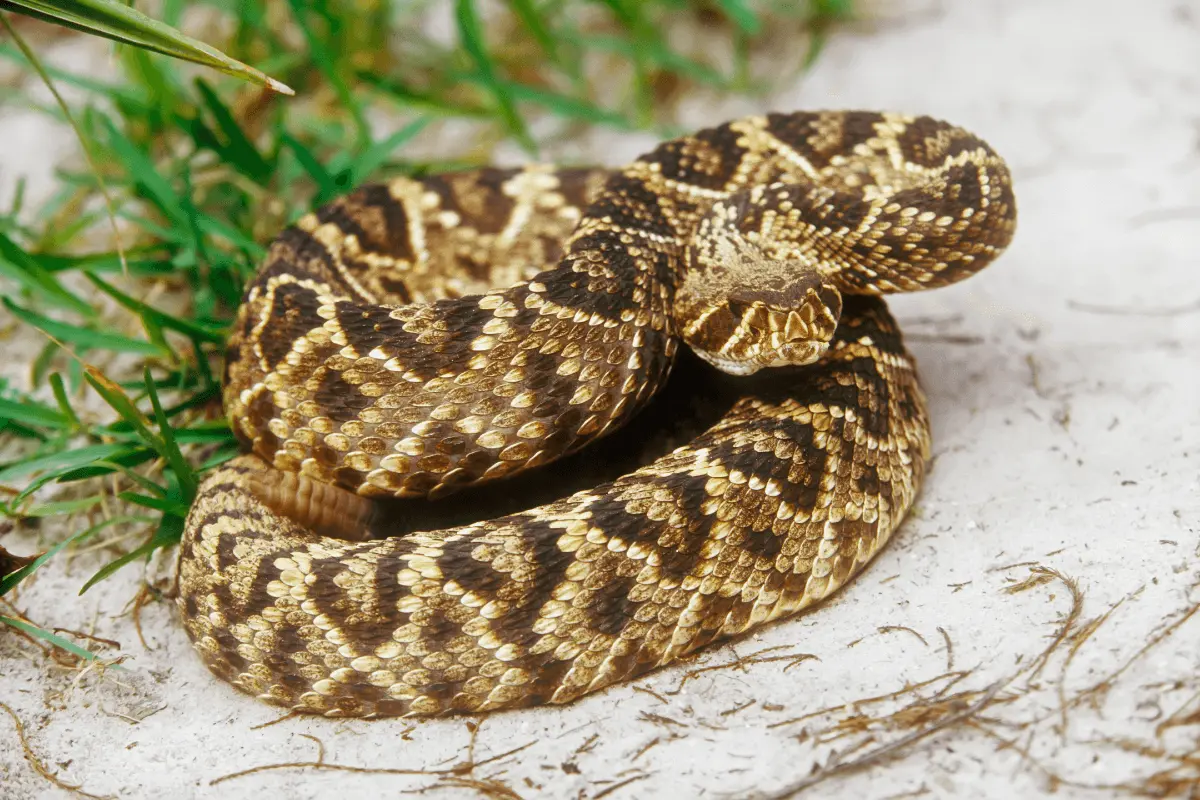
The Western Hemisphere is home to a wide variety of habitats and locations for rattlesnakes, including plains, mountains, and deserts. Rattlesnakes are dangerous predators and need strong musculature and quick reflexes for survival. Moreover, these snakes have specific sensory organs between their eyes and nostrils that help them to hunt at night.
As was previously said, most snakes can only strike ½ of their body length, rattlesnakes have been known to jump with their entire body length. Additionally, rattlesnakes often attack at a speed of 6.5 mph. Thus, this fast jumping and striking ability enable rattlesnakes to capture their prey quickly.
King Cobras
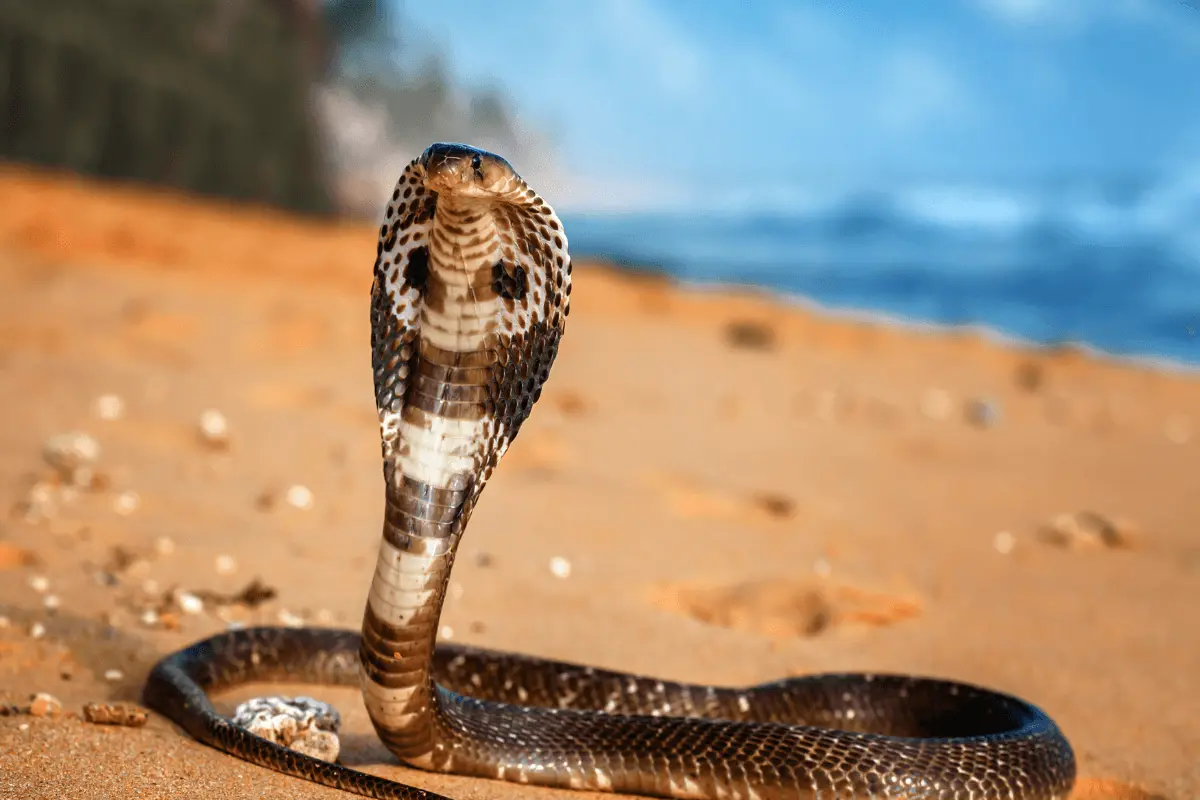
King cobras are the longest deadly snakes. They are enormous snakes that allow them to strike farther and are most common in the rainforests of Asia and India. Moreover, king cobras are the only snakes that build their own nest to protect their eggs from external harm.
These snakes have a maximum length of 18 feet. When coiled, an 18-foot king cobra can strike over 9 feet away and possibly farther if momentum is taken into account. Furthermore, they can strike up to 9 feet away and move up to 2.98 meters per second squared.
Flying Snakes
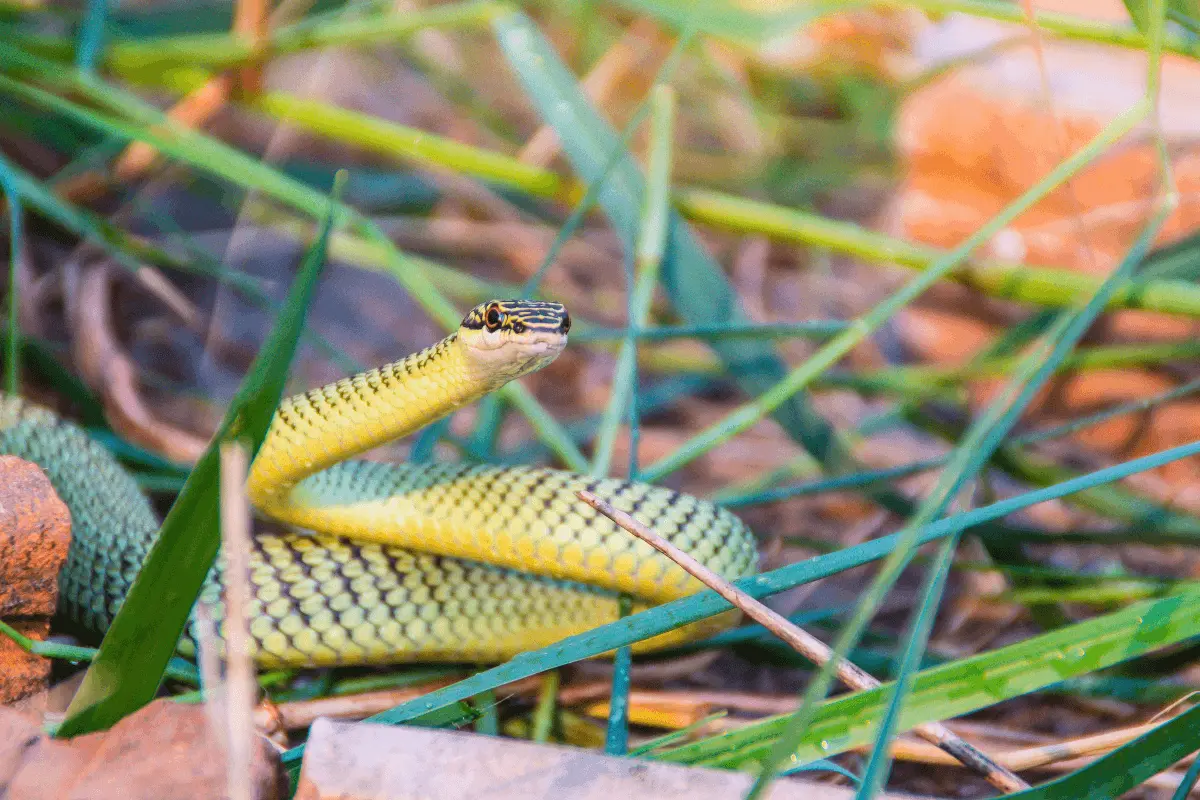
These snakes are commonly found in Sri Lanka and Southeast Asia and have at least five species. Flying snakes can ascend to a tall tree branch and swing into the air. They are gliders that produce lift by catching the air with body twists and the speed of free fall.
As they descend, they widen their ribs to flatten their bodies. It enables them to glide to a lower branch.
Although they have small, fixed rear fangs, despite being somewhat poisonous, they are harmless to people. Moreover, their diet consists of lizards, frogs, birds, and bats.
Diamondback Rattler
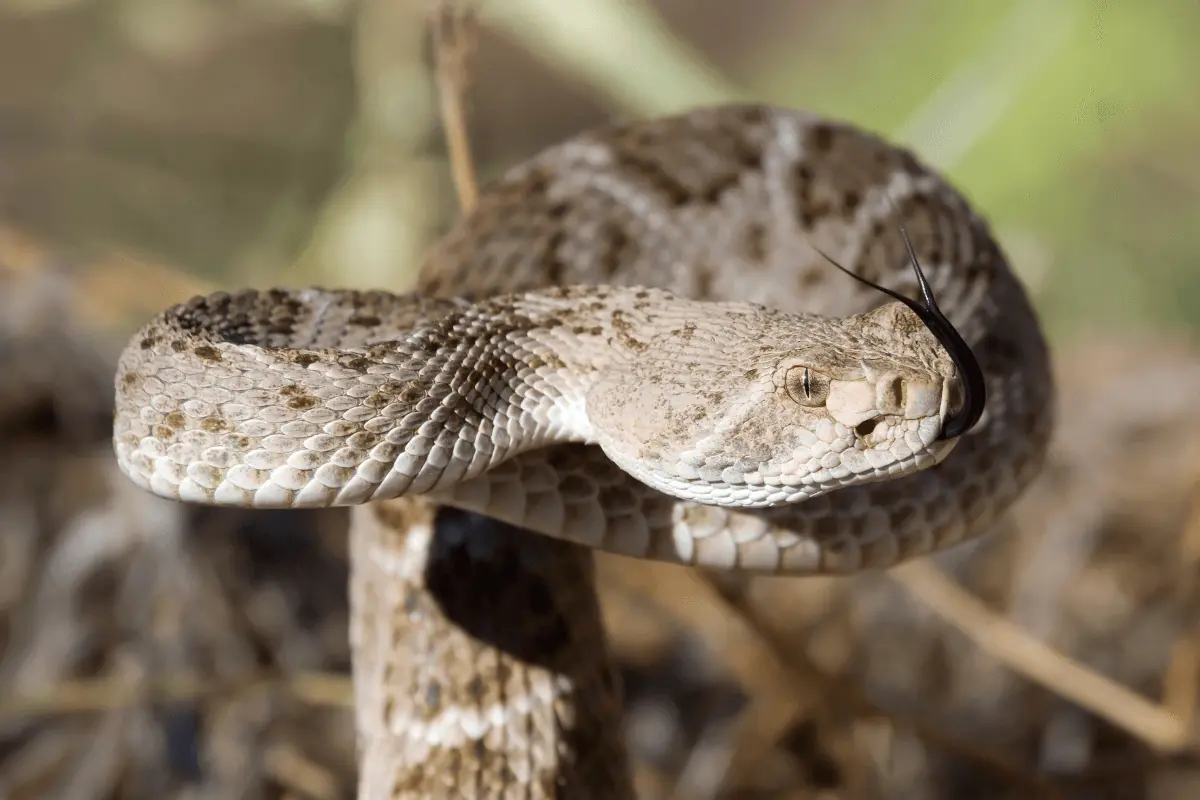
This snake is among the hefty species of rattlesnakes and is present abundantly throughout South America. It is probably to blame for the majority of fatal snakebite cases in northern Mexico and the US. They strike in defense only when rattling fails to stop them.
Furthermore, they are one of the more aggressive rattlesnake species in the US because of the manner they defend themselves when threatened. They have hefty bodies that enable them to strike ½ or ⅔ of their body length. Moreover, diamond snakes can grow up to 8 feet long and pounce more than 5 feet in front of themselves.
Common Myths About Jumping Snakes
The most common myth about snakes is that they can jump. However, the reality is that they can’t jump fully off the ground, instead part of their body remains on the floor while doing so. Although a snake’s body may appear to bounce when it strikes, this is a false impression. Technically speaking, it is not a jump.
Apart from that, snakes can’t leap because they are too long and hefty. To accomplish this, they would require a different body structure. However, they could jump at one time in their evolutionary history. They originated from organisms that resembled lizards and possessed legs, thus, they could readily jump.
Can Snakes That Are Not Coiling Up Jump?
Yes, snakes can strike or jump without coiling up. This is a misconception that they can strike while coiling up their bodies. However, snakes attack most quickly and precisely when they are coiling.
Coiling makes the lower half of the snake’s body smaller and harder to access by predators. Additionally, the lower half of the snake’s body acts as a fastener to keep the snake away from danger, while the upper half, which includes the head and fangs, performs the biting.
Although a snake can strike from any position, its strike will be limited if it is simply lying on the ground. However, usually, snakes coiled up their body to protect themselves from a threat, which may be misunderstood as they coiled for striking.
Does a Snake Strike When Scared?
Yes, a snake may jump at you when scared. However, this is commonly seen in pet snakes. When your pet snake is stressed and frightened, it may strike you to lessen its fear. One of the top reasons your snake will become stressed out is inappropriate handling.
Even if you don’t hold your snake, if you see that it still appears as though it’s going to bite you when it sees you, it might also be hungry. Therefore, due to the activation of their survival instincts, snakes may strike more frequently when starving. Thus, you should fulfill all the nutritional requirements of your snake to prevent frequent strikes.
Things That Snakes Jump
As mentioned above, snakes can jump as high as far depending on the size of their bodies. Now, you may be curious about the things that snake jump, so here is the list:
Water
If a snake lives in the water, it may jump out of it to get some air. It jumps abruptly out of the water, similar to human beings. When in the water, snakes that are not accustomed to it or its surroundings or who are not proficient swimmers may panic and jump out.
However, under normal circumstances, snakes would rather crawl to the surface below the water to escape if they fall into it accidentally.
Tree to Tree
Snakes that live in trees usually jump from one branch to another and cover a distance of 300 meters to reach the surrounding trees. This gliding behavior of snakes in the air is also known as bridging. Such snakes that glide from one tree to another usually live in Asia.
The paradise tree snake, or Chrysopelea paradise, can be seen slithering through the air from trees throughout South and Southeast Asia. These snakes travel through the air in undulating movement to jump from one tree to another. Although all snakes undulate when moving across the ground, these snakes do so in the air.
Humans
Usually, snakes don’t jump on humans, but if they are stressed and starving, they can do so. Additionally, they may jump at you if you tease them. However, people mistakenly believe snakes are jumping because of their quicker speed, which resembles jumping.
Snakes don’t view people as prey. A snake is more likely to flee than to strike out when approached. Snakes will bite or thrust outward to defend themselves if they are startled or placed in a situation where they have no way out. Snakes generally do not threaten humans or animals if they are left alone.
Final Verdict
Imagining a snake jumping at you is the most horrible experience to have. However, snakes are not evil as you think; they usually don’t strike their prey unless they are starving or stressed out. A snake may never display protective behavior or begin to coil up if it does not perceive you as a threat.
Different species of snakes have different jumping abilities, some jump farthest, while some can’t. Their striking range varies from ½ to ⅔ of their body length. As a result, anytime you come across snakes, keep your distance and give them room to prevent yourself from danger.
FAQs
References
Penning David A., Sawvel Baxter, and Moon Brad R. 2016 Debunking the viper’s strike: harmless snakes kill a common assumptionBiol. Lett.
